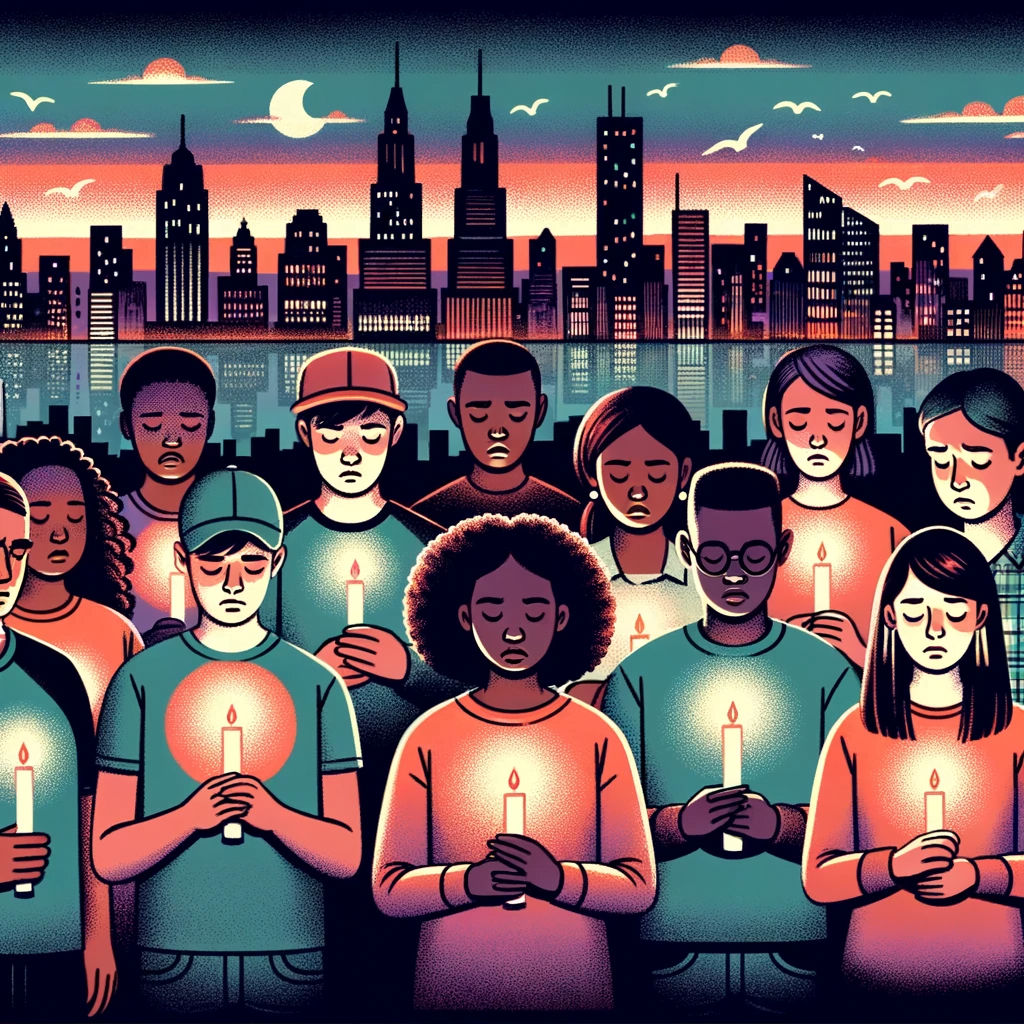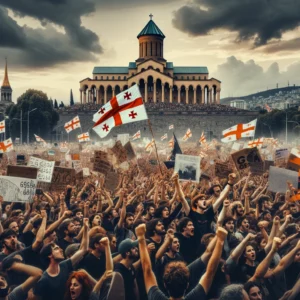The Alarming Reality of Gun Violence
The United States, a nation with a rich history and diverse culture, has been overshadowed in recent years by a dark cloud: the alarming rise in gun violence. With an average of over 39,000 gun-related deaths annually since 2014, the country finds itself grappling with a crisis that shows no signs of abating. The term ‘mass shooting’ has unfortunately become a regular feature in news headlines, evoking fear, anger, and sorrow in the hearts of many. According to the Gun Violence Archive, a mass shooting is defined as an incident where four or more individuals are shot in close temporal and spatial proximity, excluding the shooter. This definition, while clear in its criteria, does not delve into the motives or the number of fatalities, leaving the true depth of the tragedy often understated. As we venture into the heart-wrenching events of 2023, it’s essential to approach the topic with sensitivity, understanding, and a quest for solutions.

The Tragedies of 2023: A Chronological Overview
The year 2023 will be remembered for many things, but sadly, one of its most defining features will be the series of mass shootings that rocked the nation. Here’s a chronological rundown of the most lethal incidents:
- Enoch, Utah (4 January): A sombre start to the year, with eight fatalities. Michael Haight, 42, tragically turned on his family, ending their lives before taking his own.
- Half Moon Bay, California (23 January): Seven lives were lost, and another was injured in two separate shooting incidents. Chunli Zhao, 67, was apprehended and stands as the prime suspect.
- Monterey Park, California (21 January): A Chinese New Year celebration turned tragic when Huu Can Tran, 72, opened fire, resulting in 12 fatalities and nine injuries. Tran was later found deceased in his vehicle.
- Goshen, California (16 January): A suspected gang-related incident led to the death of six family members.
- Nashville school shooting, Tennessee (27 March): Audrey Hale targeted a Christian school, leading to seven fatalities and one injury.
- Henryetta, Oklahoma (1 May): Jesse McFadden, 39, a previously convicted sex offender, took the lives of his family before ending his own, resulting in seven fatalities.
- Lake Wales, Florida (2 May): Al Joseph Stenson, 38, targeted a family at a motel, leading to five fatalities.
- Allen, Texas (6 May): A shopping mall became the scene of horror when a lone shooter opened fire, causing nine fatalities and seven injuries. The police neutralized the shooter.
- Louisville, Kentucky (10 April): Connor Sturgeon, 25, targeted a bank, resulting in six fatalities and eight injuries.
- San Jacinto County, Texas (28 April): Francisco Oropeza, 38, targeted his neighbours, leading to five fatalities.
- Lewiston, Maine: In one of the most shocking incidents of the year, approximately 20 individuals lost their lives. The main suspect, a gun instructor, remains at large.
The Underlying Causes: A Societal Perspective
While the immediate aftermath of a mass shooting often focuses on the victims and the perpetrator, it’s essential to delve deeper into the societal factors that might contribute to such tragedies. Understanding these underlying causes is crucial for formulating effective solutions.
1. Gun Accessibility: The U.S. has some of the most lenient gun laws in the world. The ease with which individuals can purchase firearms, even those with a history of violence or mental health issues, is a significant concern.
2. Mental Health: Often, shooters have a history of mental health problems. However, the stigma associated with mental health and the lack of accessible care can prevent individuals from seeking help.
3. Cultural Factors: The glorification of violence in media, combined with societal pressures and the erosion of community ties, can contribute to feelings of isolation and aggression.
4. Economic Disparities: Economic struggles and the widening gap between the rich and the poor can lead to feelings of resentment, hopelessness, and anger.
5. Inadequate Law Enforcement: In some cases, warning signs are present, but they go unnoticed or aren’t acted upon by law enforcement agencies.
6. Political Polarization: The deep political divides in the country can lead to extreme ideologies and, in some cases, acts of violence.
The Role of Policy: Potential Solutions and Challenges
Addressing the gun violence crisis in the U.S. requires a multi-faceted approach, with policy playing a pivotal role. Here are some potential solutions, along with the challenges they might face:
1. Stricter Gun Control: Implementing comprehensive background checks, waiting periods, and restrictions on the sale of assault weapons could reduce the risk of firearms falling into the wrong hands.
- Challenge: The Second Amendment, which protects the right to bear arms, is a significant hurdle. Many view any form of gun control as an infringement on this right.
2. Mental Health Reforms: Investing in mental health care, reducing the stigma, and ensuring early intervention can help address potential threats before they escalate.
- Challenge: Funding and infrastructure for mental health care are lacking in many areas. Additionally, linking mental health to gun violence can further stigmatize those with mental illnesses.
3. Community Outreach: Programs that focus on community building, conflict resolution, and youth engagement can help reduce the feelings of isolation and resentment that might lead to violence.
- Challenge: These programs require consistent funding and support, which can be hard to secure in the long term.
4. Law Enforcement Training: Enhancing the training of law enforcement officers to recognize and act upon potential threats can prevent some incidents.
- Challenge: Balancing proactive measures with concerns about civil liberties and racial profiling is a delicate task.
5. Public Awareness Campaigns: Educating the public about the signs of potential violence and encouraging community vigilance can act as a deterrent.
- Challenge: Ensuring that such campaigns don’t lead to unwarranted panic or false accusations is crucial.
While no single solution can eradicate gun violence, a combination of these measures, tailored to the unique needs of each community, can make a significant difference. The challenge lies in building a consensus and navigating the complex socio-political landscape of the U.S.
The Path Forward
The tragedies of 2023 serve as a sombre reminder of the urgent need to address the gun violence epidemic in the U.S. While the pain and sorrow of these incidents are profound, they also present an opportunity for reflection, understanding, and action.
The path forward is undoubtedly challenging. The deeply entrenched cultural, political, and societal factors that contribute to gun violence require thoughtful and comprehensive solutions. However, the cost of inaction is too high. Every life lost to gun violence is a life that has potential, dreams, and a future.
As a society, it’s imperative to move beyond the divisive debates and focus on the shared goal of ensuring safety for all. This requires collaboration, understanding, and a commitment to change from policymakers, communities, and individuals alike.
The U.S. has faced numerous challenges throughout its history and has shown resilience and adaptability in the face of adversity. The gun violence crisis is no different. With collective effort, empathy, and determination, the nation can chart a path towards a safer, more harmonious future.
Insights:
- Gun Violence in the U.S.
- Definition of Mass Shootings
- Mental Health and Gun Violence
- Gun Control and Second Amendment
- Community Outreach and Gun Violence
- Law Enforcement and Gun Violence
Insider Release
Contact:
DISCLAIMER
INSIDER RELEASE is an informative blog. This blog discusses various topics. It is emphasized that the ideas and concepts, although based on research from official sources, result from free evaluations by the writers. The BLOG, in full compliance with the principles of information and freedom, is not classified as a press site.









More Stories
Zombie Deer Disease: The Rising Threat and What You Need to Know
Chinese Underground Cities: History, Uses, and Future Prospects
Discover the Yanomami: Guardians of the Amazon’s Ancient Wisdom